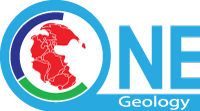1.2 Who should be reading this cookbook?
This cookbook describes the viewing and use of WMS’ using commonly and freely available clients including of course the OneGeology Portal in How to section 1.4 and this information is therefore of use to anyone wishing to understand what a OneGeology Level 1 WMS contribution makes available. The minimum technical capability that a Geological Survey, wishing to contribute a WMS to OneGeology, has to have is an existing web server that is visible without access restrictions to anyone internationally, and the technical staff to maintain and support that service. This web server must be running on port 80 (if using HTTP) or must be running on port 443 (if using HTTPS) to be accessible to the OneGeology Portal client. If you already have another web server service running on port 80 such as Tomcat, it is possible to get that server to run on another port number, and then proxy requests though to it using the MS4W Apache web server. For a quick overview of how to use the Apache-HTTP web server as such a ‘reverse proxy’ see Appendix H.
If a survey does not have this capability then OneGeology has set up a system of volunteer ‘buddy’ organizations that may be prepared to serve your data as a WMS for you. You can request assistance through the buddy coordination form (https://onegeology.org/technical_progress/buddy_coordination.cfm).
The intended audience of this cookbook is the survey’s web applications developer and a geoscientist who is going to work with them to provide the digital data to be served.
A few OneGeology participants are already serving WMS’ using MapServer or other similar technologies. If they are going to continue to use those technologies then they simply have to follow the naming and WMS configuration guidelines here to serve an OneGeology conformant WMS that can be registered with the OneGeology Portal and Client. The OneGeology conformant service naming conventions are described in detail in Section 2: WMS Profile.
Even if you are not going to use MapServer to serve your WMS please scan through these pages and read in full Section 2: WMS Profile and appendices F and G for example WMS GetCapabilities responses, which show how these naming conventions are used. See Appendix E for the MapServer configuration file that shows how one particular piece of software implements the ICS 2009 colour scheme that it is requested that OneGeology services try and implement for an age layer symbolization.
Section last modified: 13 Jan 2016
